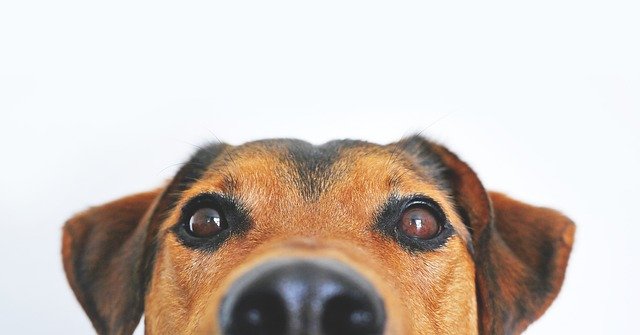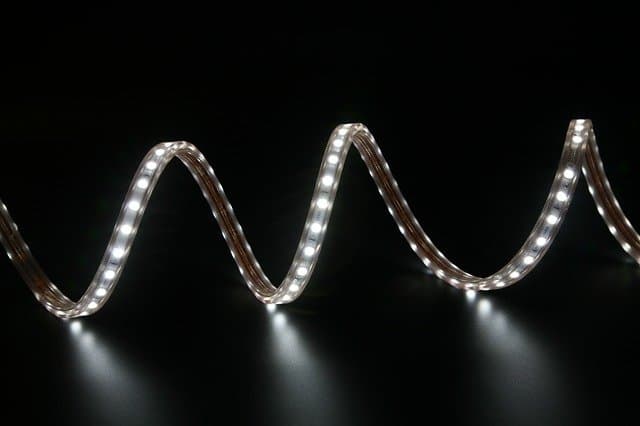Can LED Strips Damage Dogs Eyes?

To the human eye, LED bulbs aren’t like the old filament bulbs that could occasionally flicker or give off a harsher light. However, some cheaper LED bulbs do flicker, actually – it’s just so fast that we can’t see it.
Dogs can see it though, and it can make them scared – imagine an artificial light constantly flickering in front of you.
I imagine you would be uncomfortable too. There may even be long-term effects on the quality of your dog’s eyesight.
So how do you get around this?
The best thing is to make sure that you buy high quality LED strip lights. The better the quality of light, the less likely they are to flicker – meaning your dog won’t get distressed.
And to be safe, I recommend that you completely switch off LED strip lights when you leave your home and unplug them entirely if possible.
You might not be able to do this if you have a connected smart home, but otherwise just ensure they are switched off when you aren’t around.
Are LED Strips Safe For Dogs?

As long as you’re sensible, there’s no reason you can’t add LED strip lights to your home if you’re a dog owner. There are a few things you just need to think about when you’re setting them up.
Firstly, where are you planning on installing them, and is it somewhere that your dog could easily reach?
One of the most popular places to add LED strip lights is the underside of kitchen cabinets, providing a stylish glow on the floor.
But with lights this low, your dog could quite quickly get hold of the LED strip lights and cause some damage.
Equally, the cable that powers these lights may not be completely flush against the wall and is likely to be accessible to at least larger dogs, and potentially smaller breeds, too, depending on how high your outlet is.
If a dog were to chew on an LED light strip or the cable that powered them, it is unlikely that they’d suffer fatal electrocution.
However, they could get a nasty burn on their mouth, and the current can then disrupt other bodily functions. This can cause further complications, including fluid build-ups in the lungs, which can have a survival rate as low as 40%, depending on the severity.
So, you simply have to make sure that your LED strip lights are appropriately secured.
Tuck them away and pin them to the cabinet or wall closely so that there are no loose sections. That way, your dog won’t be able to get hold of them and hurt themselves.
It’s not just about chewing, though. If you use a lot of long strips of LED lights, there’s always a hazard of your dog getting wrapped up in them and choking, particularly if they’re at home while you’re away.
Dogs are energetic and playful and will tug and pull on anything they can find, so again make sure that there are no parts of your LED strip lights where the dog might be able to get a grip and pull it away from the wall or cabinet.
Suppose you follow these simple, common-sense tips to ensure that your LED strip lights are secure. In that case, I am confident you don’t need to worry about whether your home is safe for your dog (or indeed even for children!)
Remember, too, it’s not just whether LED strip lights are safe for dogs – it’s whether dogs are safe for LED strip lights. I know that you wouldn’t want to invest in a beautiful LED set up just for your pet to wreak havoc and destroy it all! So make sure it is all neatly installed.
LED Blue Light and Dogs (Behavioral Anomalies):
If you previously installed LEDs around or within your dog’s territory, and you observe irregular sleep patterns or lethargy, or any other form of behavioral anomaly, then you must pay special attention as they may be experiencing symptoms associated with blue light exposure.
So, how does this happen?
Similar to humans, dogs possess circadian rhythms(the cycle determining your sleep and wake patterns). CFL and LEDs are capable of altering these patterns. So your observations may be closely linked to the LED bulbs installed.
WHY does it happen?
High-wattage LED bulbs and CFLS emit blue light that sits in the same color spectrum as the radiation of the sun. Though ‘Warm LED light’ bulbs emit far lesser blue light.
The culprit here is the blue light emitted from LEDs and CFLS. Not only is blue light capable of altering sleep patterns, but it can also affect the eyes of humans and dogs.
Light regulates circadian rhythms in dogs and humans, so any form of disruption in light conditions can throw off the rhythms and leave your dog with an abnormal sleep pattern.
Without any doubt, we’ve established that blue light emitted by LEDs and CFLs is bad for wildlife and the health of your furry buddy.
The level of blue light emitted by LEDs is determined by the temperature of the LED. A color temperature beyond 4000K can be harmful both for you and your pet dog.